BryskeBrynolf
Beereft of all sense
- Joined
- Dec 10, 2016
- Messages
- 12
- Reaction score
- 7
Hi folks! Long time lurker on this exquisite board just wants to share this humble low-tech construction of mine.
Two years ago when I was decieved into homebrewing, I had no ambition to become any kind of equipment or DIY nerd. I felt quite content with stove-top BIAB and carbonating in bottles.
Before long, however, I found myself owning a 60 liter brewing system, four Cornelius kegs, a used fridge and a 5 kg CO2 cylinder. Armed with a drill, some JG couplings, tubes and picnic taps I soon was the proud owner an adequate kegerator.
Somehow, however, I was craving more. Having drooled for some time over the shiny Perlick taps I got hold of a 650SS and realized I didn't really have room (or funds) for three more. And besides, I would rarely need to tap more than one beer at the time. Here's the solution I came up with:
Basic requirement specification:
Solution:
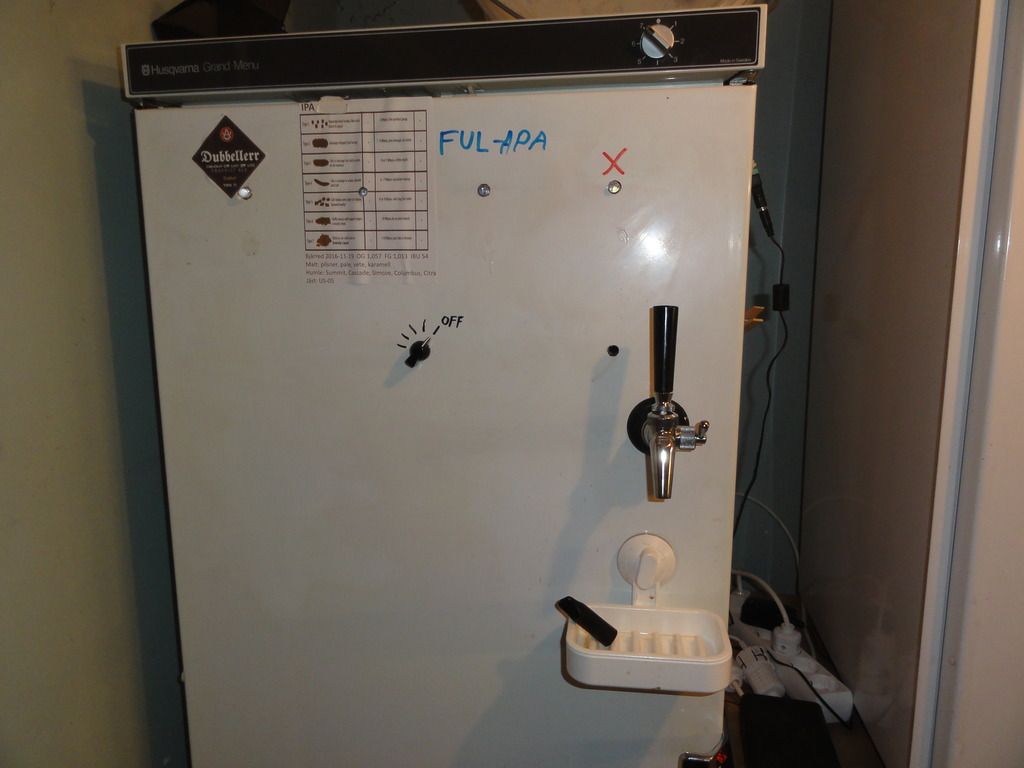
Front. Indicator LEDs in the holes where the picnic taps used to be. Soap tray not ideal.
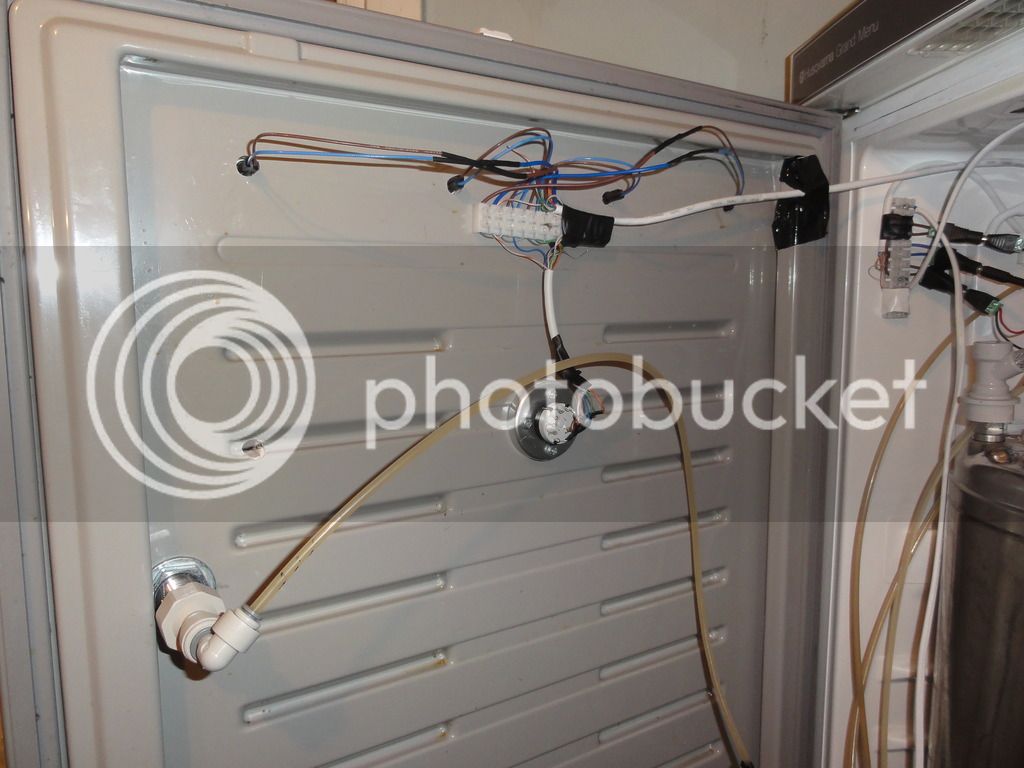
Inside of door. Yes, it needs a finishing cosmetic touch.
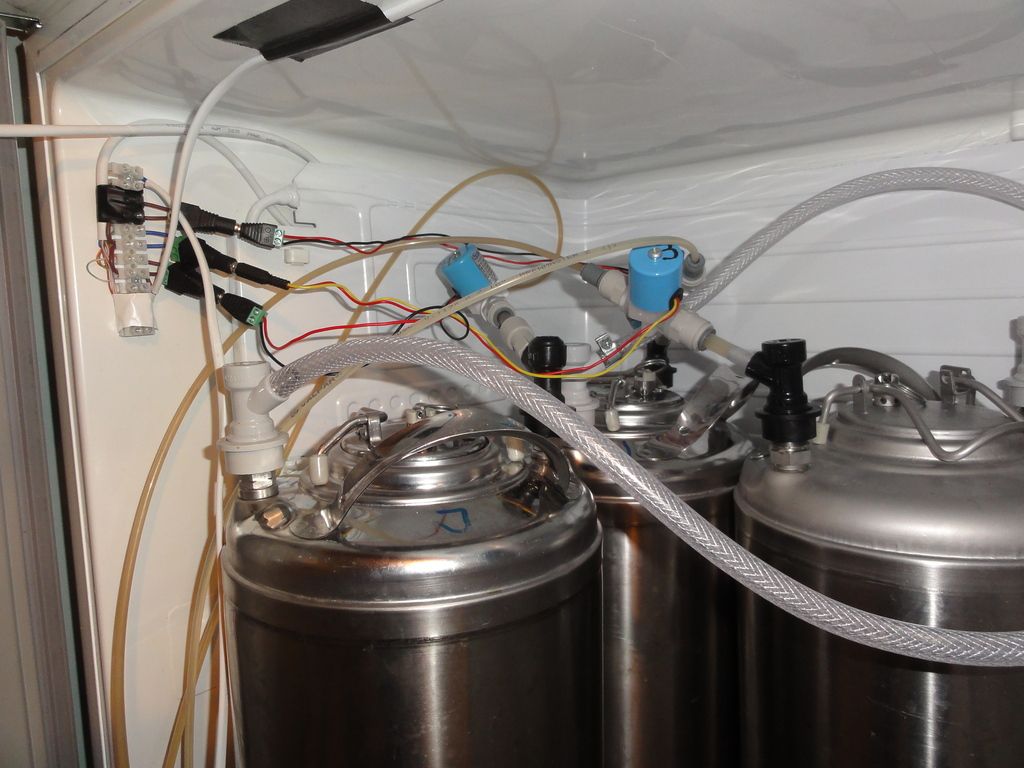
Inside of fridge. The cut up Category 5 TP cable is as digital as it gets. Fourth keg on bottom shelf.
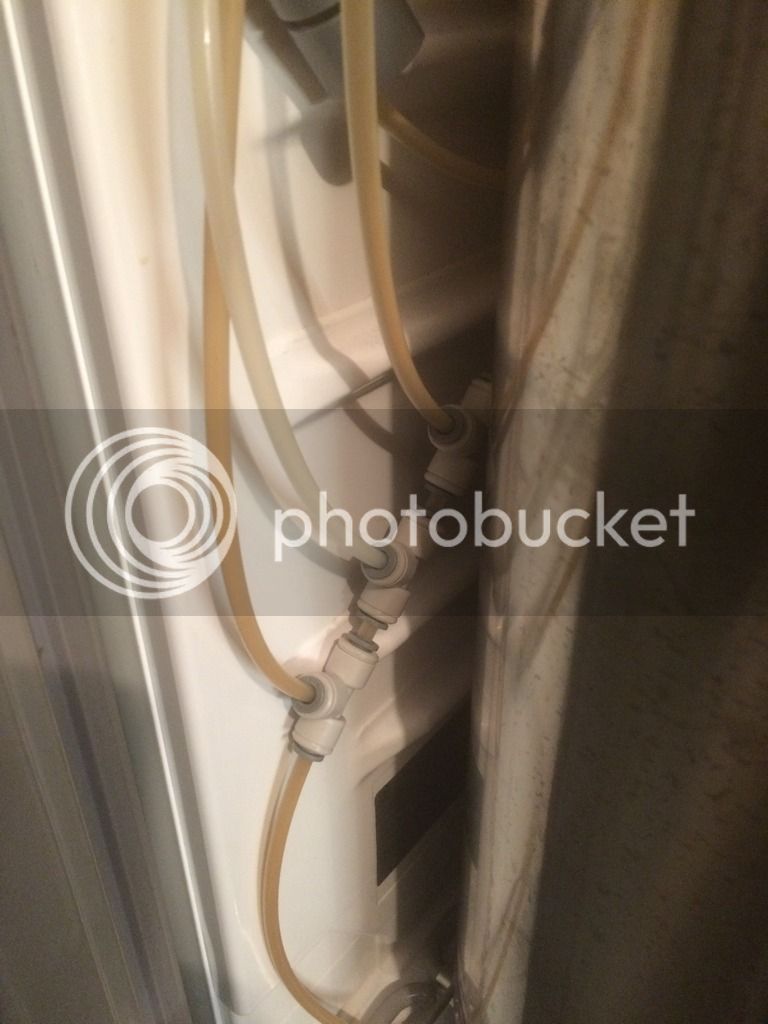
The beer hub. All 3/16.
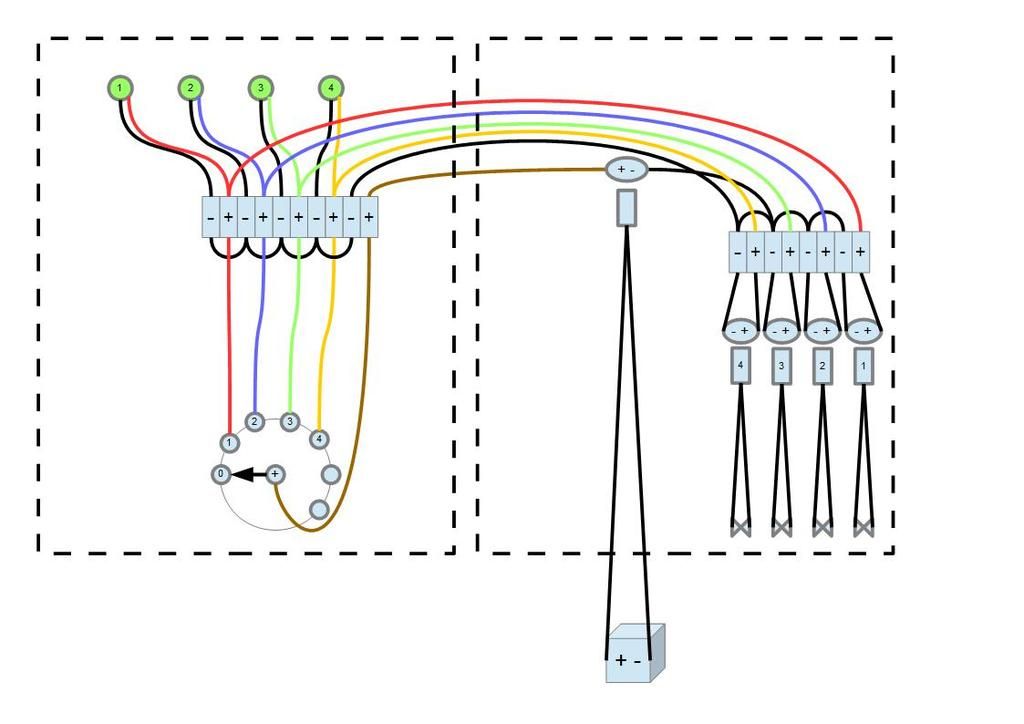
Tacky wiring diagram. Valves at bottom right.
Components:
Features:
Downsides:
I currently serve a Belgian Dubbel, an American IPA, an American APA and an English APA through the contraption. It works quite well for all of them.
Cheers!
Two years ago when I was decieved into homebrewing, I had no ambition to become any kind of equipment or DIY nerd. I felt quite content with stove-top BIAB and carbonating in bottles.
Before long, however, I found myself owning a 60 liter brewing system, four Cornelius kegs, a used fridge and a 5 kg CO2 cylinder. Armed with a drill, some JG couplings, tubes and picnic taps I soon was the proud owner an adequate kegerator.
Somehow, however, I was craving more. Having drooled for some time over the shiny Perlick taps I got hold of a 650SS and realized I didn't really have room (or funds) for three more. And besides, I would rarely need to tap more than one beer at the time. Here's the solution I came up with:
Basic requirement specification:
- All four beers must be served through the same single Perlick tap
- Minimize tubing
- Minimize cost
- No digital electronics
- Robust operation and maintenance
Solution:

Front. Indicator LEDs in the holes where the picnic taps used to be. Soap tray not ideal.

Inside of door. Yes, it needs a finishing cosmetic touch.

Inside of fridge. The cut up Category 5 TP cable is as digital as it gets. Fourth keg on bottom shelf.

The beer hub. All 3/16.

Tacky wiring diagram. Valves at bottom right.
Components:
- 1/4 Electric Solenoid Valves 12V DC
- John Guest 3/16 T
- John Guest 3/8" - 1/4" BSP and silicon thread seal tape
- John Guest Reducer 3/8" 3/16"
- 12V DC Power Plug Adapter Connectors Male & Female
- Rotary switch with chicken head knob
- 12V LED lights
- 12V DC Power adapter, 1A
- Assorted cables
- 3/16 tubes
- Terminal blocks
Features:
- Affordable
- Distinct operation
- Valves just tight enough to constrict flow, making extra length of 3/16 tubes unnecessary. An unexpected advantage.
- Easy connect/disconnect of kegs and valves
- Solenoids serve as check valves (normally closed), allowing unpressurized beer line when not activated. Also prevents backflow between kegs.
- Scalable to several more kegs
- Minimal foaming
- Cool clicking sound from the valves
Downsides:
- A small amount of beer (~10 ml) is left in the tubes from the last serving. This needs to be purged (consumed) when serving from a different keg.
- Only one beer at the time can be served.
- One tap fits all. No fancy nitro faucets and such.
- The LEDs are very bright. Blinding hazard.
I currently serve a Belgian Dubbel, an American IPA, an American APA and an English APA through the contraption. It works quite well for all of them.
Cheers!



